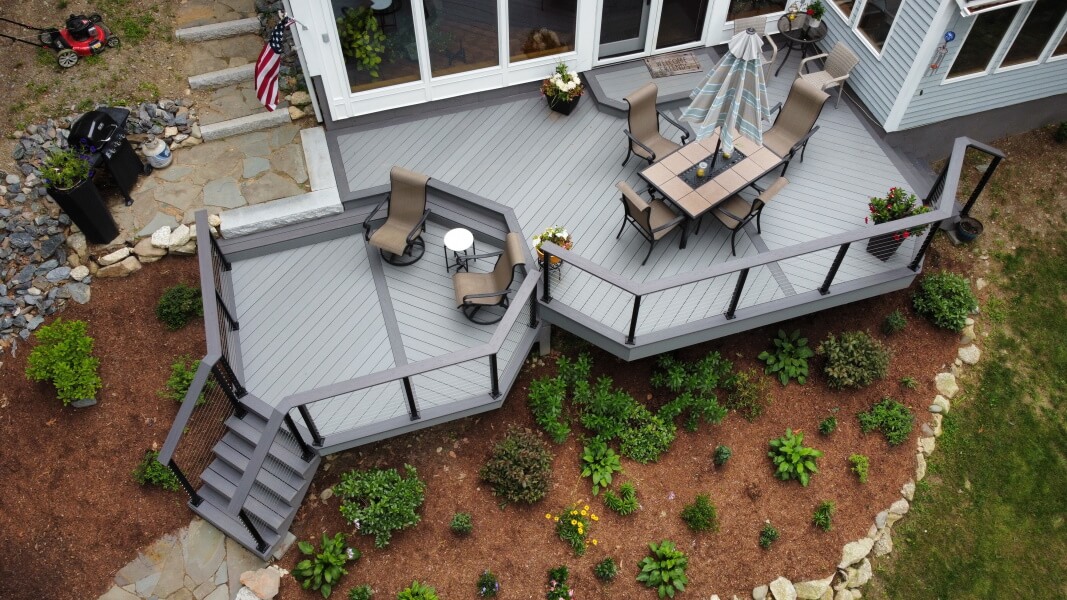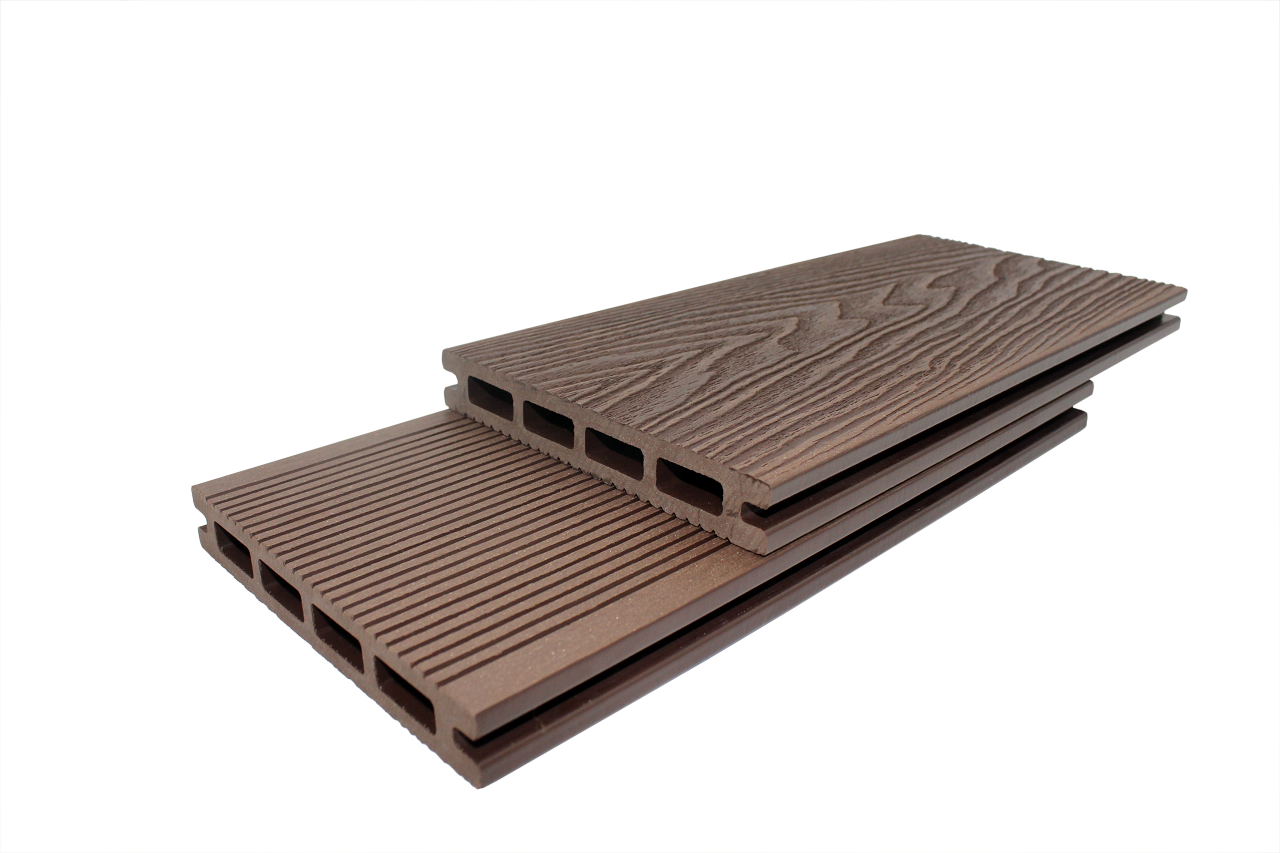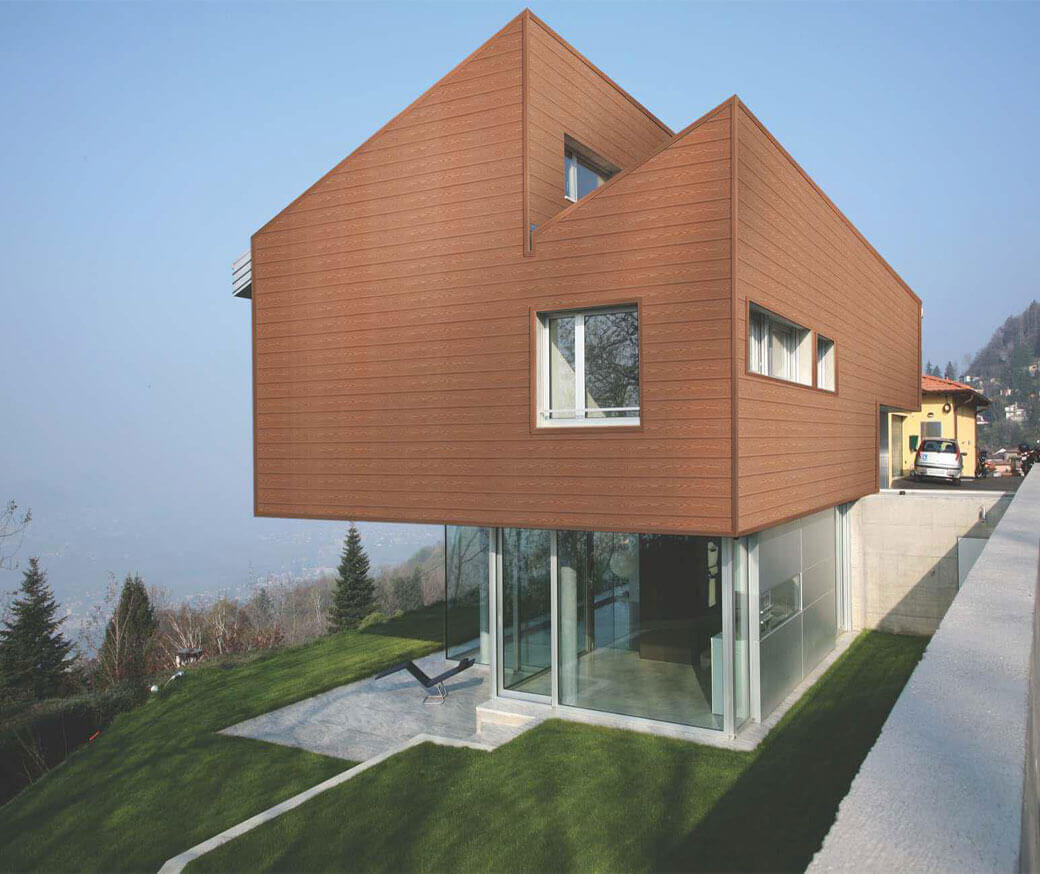
How to Create a Multi-Level Deck: Design Ideas and Considerations
December 18, 2023
Choose a New Embossed Wood Surface for your Decking
January 25, 2024Explore the 6 key advantages of WPC wood cladding for exterior walls, including durability, low maintenance, eco-friendliness, and aesthetic appeal, to make an informed decision for your property.
Discover the Smart Choice for Modern Exteriors
Ever found yourself staring at weather-beaten walls, wondering if there’s a better way to protect your property? Let me tell you why WPC wood cladding is becoming the go-to solution for homeowners and architects alike. Unlike traditional materials that demand constant upkeep, this innovative composite brings together nature’s charm and space-age technology in one package.
Picture this: a protective shield that laughs in the face of rain, resists UV damage like a superhero, and still maintains that warm wood-like texture under your fingertips. But here’s the real kicker – what if I told you this material actually gets better for the environment with every panel installed? From effortless installation that saves you contractor headaches to surprising thermal benefits that keep energy bills in check, WPC cladding packs more punches than you might expect.
Stick with me as we unpack six game-changing advantages that could completely transform how you think about exterior design. (Spoiler alert: Your neighbors might start taking notes!)
Why WPC Wood Cladding Is Revolutionizing Exteriors
Tired of replacing warped wooden planks or repainting faded vinyl siding every few years? Let’s talk about the unsung hero of modern architecture – WPC wood cladding. This isn’t your grandfather’s weatherboarding. We’re looking at a material that combines wood’s soulful character with plastic’s resilience, creating something that’s genuinely greater than the sum of its parts. Imagine a surface that ages like fine wine rather than milk left in the sun!
Here’s what blows my mind: traditional wood cladding needs more maintenance than a vintage car, while pure plastic options look about as authentic as a three-dollar bill. WPC sidesteps both pitfalls by blending recycled wood fibers and polymers into boards that handle British rain, Spanish sun, and Scandinavian frost like they’re mild spring breezes. I’ve seen installations that after five years still make passersby do double-takes thinking it’s freshly installed hardwood.
But wait until you hear how this material turns conventional wisdom on its head – we’re talking about cladding that actually becomes more eco-friendly the more you use it. Intrigued? Grab a cuppa as we dive into why this chameleon-like material is making architects ditch their old favorites faster than you can say “damp repair bills”.
Built to Outlast the Elements
Remember that sinking feeling when you spotted wood rot creeping up your siding after just two winters? WPC cladding laughs in the face of moisture like it’s child’s play. We’re talking about a material that doesn’t just survive rainy seasons – it practically throws pool parties in monsoon weather. The secret sauce? A clever mix of recycled wood fibers and polymers that creates a surface tougher than your grandma’s fruitcake.
I’ve watched traditional cedar surrender to mildew while WPC panels I installed five years ago still look fresh off the truck. These boards don’t crack under UV rays either – they’re like the skincare addict of building materials, maintaining their color while regular wood fades faster than cheap jeans. And termites? They take one sniff of WPC and scuttle away like they’ve just smelled their exoskeleton’s mortgage paperwork.
Here’s the kicker: while regular wood cladding starts begging for replacement around year 7, WPC keeps going strong like that Energizer Bunny your dad still has from the 90s. I recently checked a coastal installation that’s endured salt spray daily for a decade – zero warping, no discoloration, just casually flexing its durability like a retired Olympian. Now that’s what I call a material that’s got your back!
Say Goodbye to Weekend Chores
Let’s be real – who actually enjoys spending weekends scraping peeling paint or pressure-washing green gunk off their walls? Here’s where WPC cladding becomes your new best friend. Unlike traditional wood that demands annual TLC like some high-maintenance romance, this composite material thrives on neglect. I’ve seen clients do a double-take when I tell them their maintenance routine boils down to “maybe hose it down if birds get creative”.
Remember that time-consuming ritual of sanding, staining, and sealing wood surfaces every spring? WPC laughs at those antiquated traditions like a teenager mocking flip phones. The color isn’t just a surface coating – it’s baked right through the material like that perfect crust on a sourdough loaf. Spilled coffee? Bird strike? Just wipe it off and go back to your Netflix binge. I installed these panels on my own shed three years ago, and the only maintenance I’ve done is occasionally telling visitors how little maintenance I do.
Here’s the kicker: while traditional materials need replacement parts faster than a cheap furniture flat-pack, WPC’s resistance to warping and cracking means you’ll forget what your local hardware store even looks like. That “new build” freshness? It sticks around longer than the smell of fresh paint without any of the headaches. Now if only they made a low-maintenance version of lawn mowing…
Installation That Won’t Make You Sweat
Ever watched a home improvement show where contractors transform a house in 30 minutes? WPC cladding brings some of that magic to real life. Unlike finicky wood planks that demand precision cuts and perfect weather, these composite boards click together like LEGO blocks for grown-ups. I once helped a DIY-newbie neighbor install his garage cladding – we finished before his coffee got cold!
Here’s the beauty: no need for special tools or masonry skills. The lightweight panels snap onto battens using a simple click-lock system that even my tech-challenged uncle mastered. No more wrestling with warped boards that refuse to align, or endless sanding to hide imperfect edges. We’re talking straight-from-the-box readiness that makes traditional installation methods look like rocket science.
Remember the last time you needed three contractors and a weather window to match NASA launch criteria? WPC laughs at rain clouds – you can install it in drizzle or sunshine without worrying about material swelling. The best part? That “oops” moment when you misalign a panel becomes a 10-second fix instead of a weekend-ruining disaster. Who knew saving time and sanity could look this good?
Your Secret Weapon Against Chills and Noise
Ever pressed your hand against a cold winter wall and felt the chill seep into your bones? Or tried to concentrate while rain drummed on your siding like an overenthusiastic percussionist? Here’s where WPC cladding becomes your home’s favorite comfort blanket. This stuff doesn’t just cover your walls – it hugs your house in a thermal embrace that’ll make traditional materials blush with inadequacy.
Let me break it down: those composite boards work like nature’s own thermos. The air pockets within the material trap warmth in winter and block heat in summer better than your favorite insulated travel mug. I installed this on a client’s beach house last year, and they reported their AC bills dropped faster than tourists’ sunscreen bottles in August. Their exact words? “It’s like the house grew a fuzzy sweater that never sheds!”
Now for the quiet revolution – soundproofing that would make a library jealous. The layered structure absorbs street noise like a sponge soaking up spilled wine. Remember that client near the airport? After switching to WPC cladding, they joked about needing to check flight radar apps less than their Netflix queue. Heavy rain? It transforms from headache-inducing racket to soothing white noise – nature’s own ASMR soundtrack.
Here’s the kicker: while traditional insulation turns wall cavities into buffet lines for rodents, WPC’s solid composition keeps pests out better than a velvet rope at a celebrity club. That cozy cabin feel without the drafty windows? Check. Peaceful mornings without garbage truck symphonies? Double check. Who knew feeling smug about your energy bills could be so… well, quiet?
Mother Nature’s Favorite Building Material
Ever wonder if your home’s exterior could actually give back to the planet? Here’s the twist that’ll make tree-huggers and pragmatists high-five – WPC cladding turns construction waste into environmental wins. Unlike traditional wood siding that plays matchmaker between chainsaws and forests, this composite material flirts shamelessly with recycled plastic bottles and sawmill leftovers. I like to think of it as Tinder for industrial byproducts – swiping right on materials that would otherwise clog landfills.
Let’s break it down: that gorgeous wood-like finish? It’s crafted from reclaimed wood fibers that escaped the chipper’s wrath. Those durable polymers? Mostly repurposed grocery bags and yogurt containers having their second act. I recently toured a factory where they mix this stuff like eco-conscious bartenders – two parts post-consumer plastic, one part wood scrap, shaken not stirred. The result? Siding that’s more recycled than your artsy friend’s vintage jacket collection.
Here’s the kicker – while traditional materials guzzle resources like a frat party keg, WPC production uses less water than your morning shower and skips toxic chemicals altogether. And when it eventually comes time to replace panels (think decades later), the whole lot gets recycled into – you guessed it – new WPC boards. It’s the circle of life, construction-style. Who knew being environmentally responsible could look this sleek?

